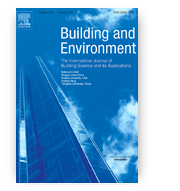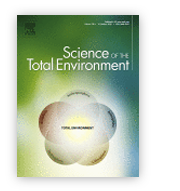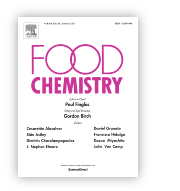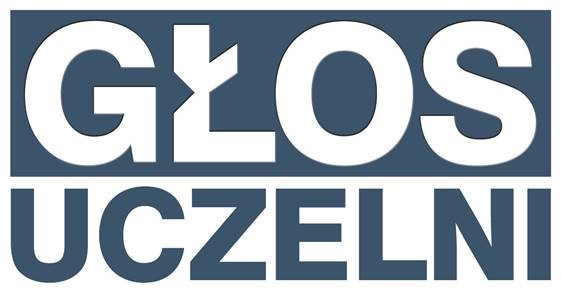
Research papers of the month – March
We present the highest-score research papers of March 2021.
Rengin Aslanoğlu, Piotr Pracki, Jan Kazak, Begüm Ulusoy, Sepideh Yekanialibeigloua
Zheng Chen, Yue Rao, Muhammad Usman, Huihui Chen, Andrzej Białowiec, Shicheng Zhang, Luo Gang
Aneta Wojdyło, Paulina Nowicka, Karolina Tkacz, Igor Turkiewicz
Short-term analysis of residential lighting: A pilot study
Rengin Aslanoğlu, Piotr Pracki, Jan Kazak, Begüm Ulusoy, Sepideh Yekanialibeigloua
Building and Environment
 Lighting is one of the environmental elements that facilitates people to maintain their lives. With light people can collect visual cues about their environments in which they can perform visual tasks safely and comfortably. Exploring the lighting systems and conditions in residential interiors is important for introducing new concepts concerning human visual comfort. The study aimed to collect data and conduct a short-term analysis about residential lighting which will be a part of a more comprehensive research. The study focused on day- and artificial lighting systems, conditions and people’s assessments in interiors of residential buildings. An internet-based survey was distributed in July-August 2020 through Google Survey across Poland, Turkey, the U.K. and Sweden in the native languages of each country. 29 adult females and 31 adult males voluntarily participated in the present study. The study identified several interconnected factors related to residential lighting and explored them in detail. Large percentage of the respondents were satisfied or very satisfied with daylighting quality in summer (86.7%) and artificial lighting quality (78.4%) in their living areas. The amount and uniformity of lighting were the most effective cues connected with the respondents’ satisfaction. Reasonable and promising outcomes that were found can be used in generating new and comprehensive data about lighting quality in residential buildings.
Lighting is one of the environmental elements that facilitates people to maintain their lives. With light people can collect visual cues about their environments in which they can perform visual tasks safely and comfortably. Exploring the lighting systems and conditions in residential interiors is important for introducing new concepts concerning human visual comfort. The study aimed to collect data and conduct a short-term analysis about residential lighting which will be a part of a more comprehensive research. The study focused on day- and artificial lighting systems, conditions and people’s assessments in interiors of residential buildings. An internet-based survey was distributed in July-August 2020 through Google Survey across Poland, Turkey, the U.K. and Sweden in the native languages of each country. 29 adult females and 31 adult males voluntarily participated in the present study. The study identified several interconnected factors related to residential lighting and explored them in detail. Large percentage of the respondents were satisfied or very satisfied with daylighting quality in summer (86.7%) and artificial lighting quality (78.4%) in their living areas. The amount and uniformity of lighting were the most effective cues connected with the respondents’ satisfaction. Reasonable and promising outcomes that were found can be used in generating new and comprehensive data about lighting quality in residential buildings.
10.1016/j.buildenv.2021.107781
Anaerobic fermentation of hydrothermal liquefaction wastewater of dewatered sewage sludge for volatile fatty acids production with focuses on the degradation of organic components and microbial community compositions
Zheng Chen, Yue Rao, Muhammad Usman, Huihui Chen, Andrzej Białowiec, Shicheng Zhang, Luo Gang
Science of the Total Environment
 Hydrothermal conversion (HTC) is a promising technology for the treatment of dewatered sewage sludge to produce bio-fuels including bio-oil and hydrochar. At the same time, a huge amount of wastewater (HTCWW) was produced. The present study investigated the organic compositions of HTCWW obtained at different HTC temperatures (170-320 °C) and volatile fatty acids (VFAs) yields through anaerobic fermentation. Results showed that the highest VFAs yield of 0.59 gCODVFA/gCOD was obtained from HTCWW obtained at 170 °C (HTCWW 170). Higher amount of easily biodegradable organics including proteins and carbohydrates were present in HTCWW 170 °C, which resulted in the highest VFAs yields. With the increase of HTC temperature, recalcitrant organic compounds were produced as revealed by 3D-EEM and GC–MS analysis, which resulted in lower VFAs yields. Furthermore, microbial analysis showed that different compositions in the HTCWW led to the enrichment of different microbial communities, which affected the VFAs yields.
Hydrothermal conversion (HTC) is a promising technology for the treatment of dewatered sewage sludge to produce bio-fuels including bio-oil and hydrochar. At the same time, a huge amount of wastewater (HTCWW) was produced. The present study investigated the organic compositions of HTCWW obtained at different HTC temperatures (170-320 °C) and volatile fatty acids (VFAs) yields through anaerobic fermentation. Results showed that the highest VFAs yield of 0.59 gCODVFA/gCOD was obtained from HTCWW obtained at 170 °C (HTCWW 170). Higher amount of easily biodegradable organics including proteins and carbohydrates were present in HTCWW 170 °C, which resulted in the highest VFAs yields. With the increase of HTC temperature, recalcitrant organic compounds were produced as revealed by 3D-EEM and GC–MS analysis, which resulted in lower VFAs yields. Furthermore, microbial analysis showed that different compositions in the HTCWW led to the enrichment of different microbial communities, which affected the VFAs yields.
10.1016/j.scitotenv.2021.146077
Fruit tree leaves as unconventional and valuable source of chlorophyll and carotenoid compounds determined by liquid chromatography-photodiode-quadrupole/time of flight-electrospray ionization-mass spectrometry (LC-PDA-qTof-ESI-MS)
Aneta Wojdyło, Paulina Nowicka, Karolina Tkacz, Igor Turkiewicz
Food Chemistry
 This study focused on the identification (by LC-PDA-qTof-ESI-MS) and quantification (by UPLC-PDA) of isoprenoids of the fruit tree leaves (FTL) of commonly consumed fruits: apple, pears, quince, apricot, peach, plums, sweet and sour cherry. The FTL were collected at 2 time points: after tree blooming and after fruit collection. In FTL 7 carotenoids and 16 chlorophylls were identified, but the number of labeled chlorophyll compounds depended on the species. FTL of apple, sour cherry and apricot were identified as the best sources of chlorophylls (mean 404.8, 388.7 and 364.5 mg/100 g dw, respectively) and sweet and sour cherry leaves as the best sources of carotenoids (831.4 and 1162.0 mg/100 g dw, respectively). A lower content of chlorophylls and carotenoids, but not significantly, was detected in leaves after autumn collection of fruits compared to leaves collected after blooming. Fruit tree leaves are good material for isolation of chlorophylls and carotenoids for application in cosmetics, pharmaceuticals or in the food industry, e.g. production of beverages or puree.
This study focused on the identification (by LC-PDA-qTof-ESI-MS) and quantification (by UPLC-PDA) of isoprenoids of the fruit tree leaves (FTL) of commonly consumed fruits: apple, pears, quince, apricot, peach, plums, sweet and sour cherry. The FTL were collected at 2 time points: after tree blooming and after fruit collection. In FTL 7 carotenoids and 16 chlorophylls were identified, but the number of labeled chlorophyll compounds depended on the species. FTL of apple, sour cherry and apricot were identified as the best sources of chlorophylls (mean 404.8, 388.7 and 364.5 mg/100 g dw, respectively) and sweet and sour cherry leaves as the best sources of carotenoids (831.4 and 1162.0 mg/100 g dw, respectively). A lower content of chlorophylls and carotenoids, but not significantly, was detected in leaves after autumn collection of fruits compared to leaves collected after blooming. Fruit tree leaves are good material for isolation of chlorophylls and carotenoids for application in cosmetics, pharmaceuticals or in the food industry, e.g. production of beverages or puree.
10.1016/j.foodchem.2021.129156










